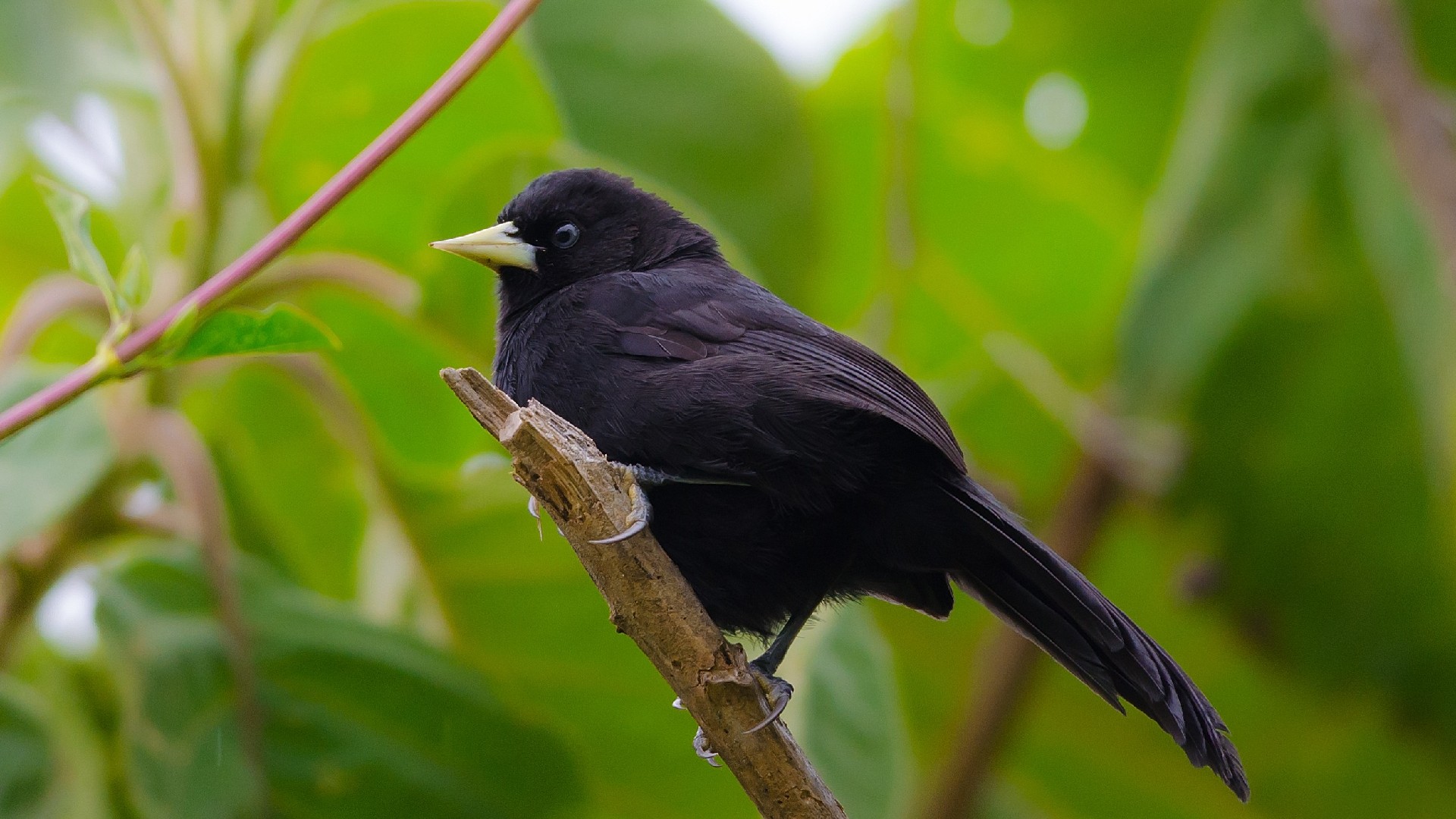Yellow-billed Cacique
A species of Yellow-billed Cacique Scientific name : Amblycercus holosericeus Genus : Yellow-billed Cacique
Yellow-billed Cacique, A species of Yellow-billed Cacique
Botanical name: Amblycercus holosericeus
Genus: Yellow-billed Cacique
Content
Description General Info
 Photo By https://www.flickr.com/photos/neilorlandodiazmartinez , used under CC-BY-SA-2.0 /Cropped and compressed from original
Photo By https://www.flickr.com/photos/neilorlandodiazmartinez , used under CC-BY-SA-2.0 /Cropped and compressed from original Description
The yellow-billed cacique (Amblycercus holosericeus) is a species of cacique in the family Icteridae. It is monotypic within the genus Amblycercus. There is some question as to whether or not it is a true cacique. The plumage is entirely black. The legs and feet are dark gray. The eye is yellow or yellow-orange. The bill is yellow with a gray tinge. Measures 23 cm (9.1 in) long. It is found in Belize, Bolivia, Colombia, Costa Rica, Ecuador, El Salvador, Guatemala, Honduras, Mexico, Nicaragua, Panama, Peru, and Venezuela. Three subspecies are known: A. h. holosericeus – (Deppe, 1830): nominate, found from southeastern Mexico to northwestern Colombia A. h. flavirostris – Chapman, 1915: found from western Colombia to northern Peru A. h. australis – Chapman, 1919: found in northern Colombia and northwestern Venezuela to eastern Peru and northern Bolivia Its natural habitats are subtropical or tropical moist lowland forests, subtropical or tropical moist montane forests, and heavily degraded former forest. The yellow-billed cacique feeds on insects and other invertebrates, as well as some fruit. It uses a pecking technique similar to that of a woodpecker to gain access to the interior of branches and bamboo. In some areas, this species is a bamboo specialist, while in other areas, it feeds from a variety of vegetation. In the spring, the yellow-billed cacique builds a sturdy cup-shaped nest, which is unusual for its family, who tend to build hanging woven nests. 
Size
21 cm
Life Expectancy
6-20 years
Nest Placement
Cavity
Feeding Habits
Yellow-billed Cacique, a varied forager, primarily consumes insects, other arthropods, small vertebrates, and fruit. It exhibits unique adaptations for varied feeding, preferring certain types of food depending on availability.
Habitat
The yellow-billed Cacique typically inhabits dense thickets and underbrush within secondary forests, which may include robust stands of bamboo, especially those found adjacent to water sources like streams. Habitually, yellow-billed Cacique are spotted in areas with thick vegetation comprised of weedy fields or abandoned agricultural lands amidst forests. While they generally reside at elevations from sea level up to 1500 meters, some populations, especially those in the Andes, are adapted to higher altitudes, ranging from 1500 to 3500 meters.
Dite type
Frugivorous
General Info
Feeding Habits
Bird food type

Fruit
Species Status
Not globally threatened.

 Photo By https://www.flickr.com/photos/neilorlandodiazmartinez , used under CC-BY-SA-2.0 /Cropped and compressed from original
Photo By https://www.flickr.com/photos/neilorlandodiazmartinez , used under CC-BY-SA-2.0 /Cropped and compressed from original Scientific Classification
Phylum
Chordates Class
Birds Order
Perching birds Genus
Yellow-billed Cacique Species
Yellow-billed Cacique